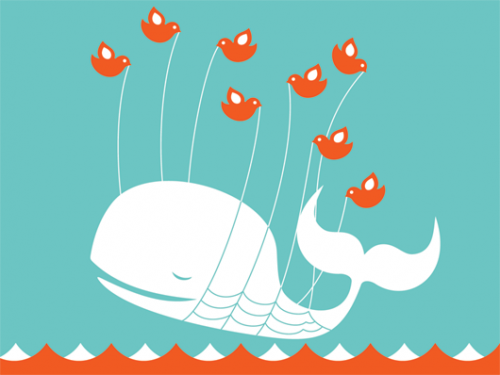This blog has not much to do with anything on this site, except that I ‘tweet’ a lot of astronomy related stuff and this is an explanation of how to use twitter. My target groups for this post are as follows:
- You’re a friend of mine, probably Dutch, and you recently created a Twitter account, but you feel lost (and you’re driving me nuts).
- We kind of know each other via-via and you keep inviting me to see and/or do stuff on Facebook and I keep telling you how much I love organised twitter and dislike profile-sites with their pokes and adds and Farmville (I mean, seriously?).
- You either know me or you stumbled on this post by accident and you either think ‘you’re such a typical teacher’, or possibly you’ll find it helpful.
Alright, first of all:
Start following interesting people or companies yourself. Unlike the profile-sites, this doesn’t mean a mutual ‘relationship’ though. If you want them to follow you back, make sure you have a nice picture (of you) and a short bio (a few words of your interests will do).
Have something interesting to say:
Twitter is not that website where you only express uninteresting narcissism. Nobody wants to know when you’re on the toilet (this is not meant to be funny; I’ve actually seen someone tweeting this)! Witty worded random tweets about stuff happening to you can be fun, especially for actual friends. Twitter is also a great networking place and lots of information, news and interesting links get shared among people with the same interests. And it will not decrease your real social life, like Queen Beatrix feared it would.
How often?
My advice: if you’re posting 60 tweets a minute, you’ll annoy people by filling up their timelines. But since it’s quick and short, you’ll probably soon find yourself tweeting at least daily. Even if it’s just a funny quote you heard.
How does the ‘@-reply’ work?
Someone I follow had been very quiet while he was on a holiday but suddenly tweeted he was disappointed nobody had replied to his tweets. Turned out he had been tweeting but had started every tweet with ‘@city’. He was trying to say ‘I’m still at this city’, but this method made it an @-reply. These are direct replies to someone (in this case the ‘city’, which is probably not even a twitter user) and can only be seen by that person and the people in your list who follow that person too (yeah, read that last sentence again). Keep in mind though, that if you haven’t protected your tweets, everybody can see all your messages when they click on your profile. Except Direct Messages; they are completely personal. If you want everyone in your list to see a message to someone, make sure you say something before you use the @-symbol, like: ‘Hello @hannyvanarkel, nice blog post’. Also, make sure you check who replied to you every now and then via the menu on the right, as also people you don’t follow can do so!
What’s with the ‘#-symbol’ then?
These are used following terms you can easily find back. For instance: ‘I’m now at #event and it’s great’. It’ll become a link, which you can click to find out what others are saying about the same event. Often these are also used in a silly way, showing sentencestypedwithoutspaces.
Retweets.
When someone you follow says something you totally agree with, or you think is amusing or helpful to your followers too, you can retweet their message with the button under the tweet. This is the reason you’ll sometimes see pictures of people in your timeline, while you’re not following them: someone you do follow quoted them this way! But there’s another way to spread their message. You use this (if you have enough characters) if you want to say something about it yourself too. This should look like: ‘Very cool news! RT @name_of_person_who_wrote_it, followed by their message’.
Last tip:
Read what other people are doing and just try it. You’ll find lots more nice functions, like the ‘favourite’ button for tweets you want to find back easily and the silly Trending Topics (what lots of tweeple are talking about). It seems like a whole new language, but this is really all there is to it. Now let’s share this on twitter.

The Twitter Failwhale.








